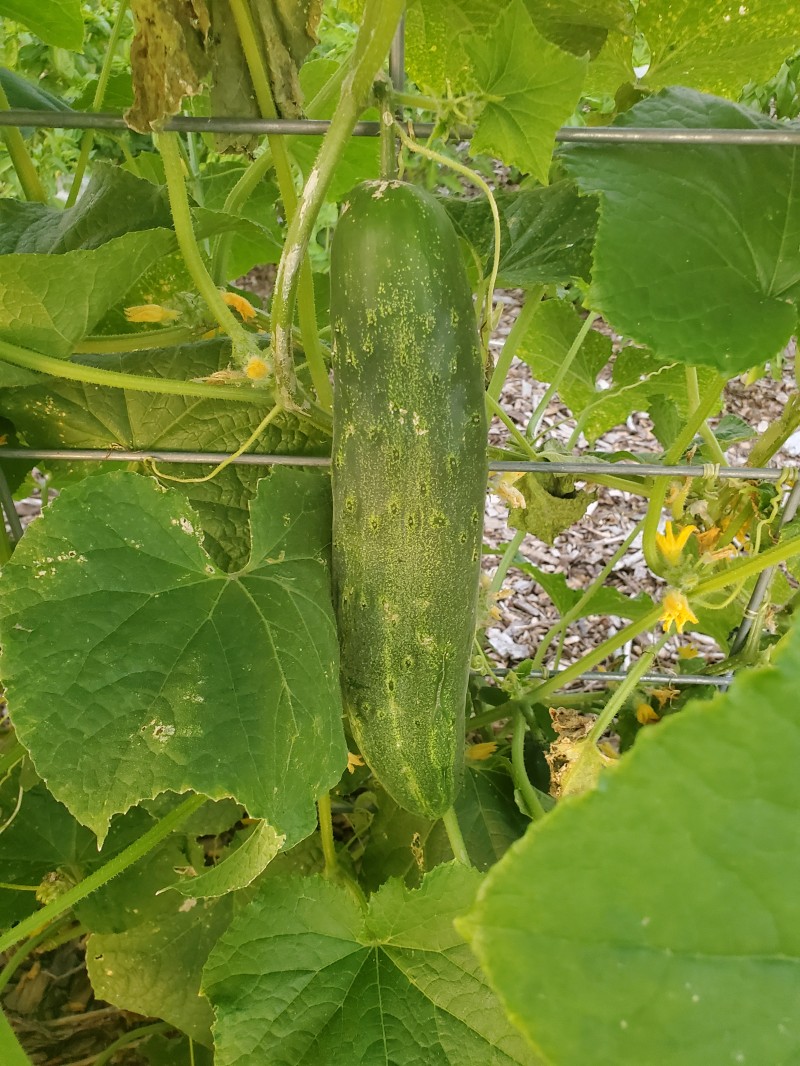Additional images and information via the Seed Savers Collective
This variety is crisp, tender, and slightly tart. These fruits are excellent for fresh eating or pickling. First available in 1894, this variety puts out curly tendrils that allow it to climb up vertical supports such as a fence or trellis. Using vertical support allows you to harvest your bounty much easier!
Planting/Harvesting Notes
- Plant after all chance of frost has passed in an area that receives full sun
- Plant 4-5 feet apart
- Matures in 58-65 days
Seed Saving
Cucumbers must grow past the point of edibility in order to have mature seed. So you should save seed at the end of the season since once the seed matures, the vine will stop producing new fruit. Choose a disease free plant that has desirable fruit to save seed from. Be sure to either hand pollinate any blooms or only grow one variety of squash/cucumber in order to ensure you get the same type of plant as the plant you are saving from.
To save seed, harvest the squash after it has turned a deeper yellow or orange. Then cut the squash and scoop out the seeds into a container. Then fill the container with water so the seeds float (1/4-1/2 cup water) and allow the seeds to ferment for 3 days or so. Stir the container daily. This fermentation process allows the seeds to remain viable for 3-4 years if stored correctly. Once the seeds are fermented, the good seeds should sink to the bottom of the container and the bad ones should float. After 3 days, skim off the floating seeds and scum. Dump the sunken seeds into a strainer to wash and then dry on a screen or a paper plate. Be sure to label seeds! Once the seeds are dry, store in a labeled paper envelope.
Lay seeds out to dry on a drying screen, paper plate, or similar flat surface. Label these seeds so you remember what they are. Then once the seeds are dry, store in a labeled paper envelope in a cool, dry place. Dried cucumber seeds will remain viable for up to 6 years if properly stored.



